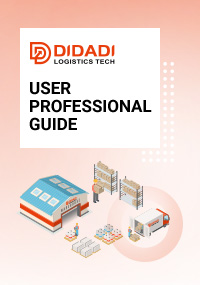Shipping from China to New York: Complete Guide for Importers

New York is one of the busiest import hubs in the United States, handling millions of tons of cargo each year. For businesses sourcing products from China, shipping to New York presents significant opportunities but also complex challenges. From customs clearance to port congestion, transit times to cost optimization, understanding the full process is crucial to avoid delays, reduce risks, and maintain profit margins.
Many new importers underestimate the complexity of international shipping. Beyond the supplier invoice, factors such as freight mode, documentation, customs procedures, port handling, and inland transportation all contribute to the final landed cost. In this guide, we will explore every aspect of shipping from China to New York, including common pitfalls, cost factors, best practices, and how a logistics partner can simplify the process.
The first step in planning shipments is selecting the most appropriate shipping mode. Each mode has trade-offs between cost, speed, and reliability:
Sea Freight: The most cost-effective option for large shipments. Full Container Load (FCL) or Less-than-Container Load (LCL) shipments from major Chinese ports such as Shanghai, Shenzhen, Ningbo, or Qingdao typically take 25–35 days to reach New York Harbor. FCL is ideal for large volumes, while LCL suits smaller shipments but may incur additional handling fees for consolidation. Proper coordination is critical to prevent delays in port and during inland delivery.
Air Freight: Faster than sea, but more expensive. Air freight transit times are usually 5–10 days door-to-door, depending on airport processing, customs clearance, and final delivery. This option works well for high-value, time-sensitive products but requires careful planning to balance cost versus speed.
Express Courier Services: Carriers like DHL, UPS, FedEx, and TNT can deliver small parcels in 3–5 days, providing convenience and tracking. While more expensive on a per-kilogram basis, express shipping is ideal for urgent inventory replenishments or samples.
Selecting the right mode depends on shipment volume, value, urgency, and cost. Many importers adopt a mixed approach: sea freight for bulk stock, and air or courier for urgent items or high-margin products.
Shipping cost is often more than just the freight fee. Several elements affect the total cost of importing from China to New York:
Freight Type and Volume: FCL offers lower per-unit cost but requires larger volumes, whereas LCL incurs additional fees due to consolidation, handling, and port operations.
Origin Port Selection: Large Chinese ports like Shanghai, Shenzhen, Ningbo, Qingdao, or Guangzhou have frequent sailings and a range of carriers, resulting in better pricing and scheduling options. Remote or smaller ports may require transshipment, adding days to transit times.
Destination Port Fees: New York Harbor charges include terminal handling, security fees, and documentation fees. Inland transportation from port to warehouse is another critical cost to consider.
Seasonal Fluctuations: Shipping costs and transit times can increase during Chinese New Year, Golden Week, or peak retail seasons in the U.S., when demand for freight and containers surges.
Customs Duties and Taxes: Import duties, customs brokerage fees, and sales tax may apply depending on the product type. Incorrect or missing documentation can delay clearance and result in fines.
Packaging and Product Type: Oversized, fragile, or hazardous items require special handling, which increases cost. Proper packaging also reduces damage risk and potential replacement costs.
Accounting for all these factors upfront helps importers calculate an accurate landed cost, avoiding surprises that can eat into profit margins.
Shipping from China to New York involves careful planning of routes and carriers:
Major Origin Ports in China: Shanghai (electronics, consumer goods), Shenzhen (electronics, textiles), Ningbo (industrial goods, machinery), Qingdao (machinery, furniture).
Destination Port: The Port of New York and New Jersey serves as the primary gateway for East Coast imports. It has advanced infrastructure for container handling and inland transport connections.
Route Considerations: Direct sailings are preferred for reliability and shorter transit times. Transshipment through Singapore, Busan, or Hong Kong can extend delivery time but may reduce costs for certain carriers.
Carrier Selection: Experienced carriers with established China–New York lanes reduce the risk of delays, lost containers, and miscommunication. Checking historical performance, transit reliability, and service coverage is crucial.
Importing from China to New York is not without risks. Some common challenges include:
Port Congestion: Both Chinese export ports and New York Harbor may experience delays during peak seasons. Booking in advance and monitoring container availability mitigates this risk.
Incorrect Documentation: Missing or inaccurate invoices, packing lists, or HS codes can hold up customs clearance. Double-check all documents and ensure they comply with both U.S. and Chinese regulations.
Incoterm Confusion: Misunderstanding responsibilities under FOB, CIF, DDP, or EXW agreements may result in unexpected costs. Always clarify which party handles freight, duties, insurance, and delivery.
Customs and Regulatory Compliance: Certain products, including electronics, chemicals, and batteries, require specific certifications or permits. Non-compliance can cause delays, fines, or shipment rejection.
Hidden Costs in Quotes: Some freight quotes are port-to-port only and exclude inland trucking, customs clearance, or duties. Confirm what is included before booking.
By anticipating these challenges, importers can make informed decisions and reduce the risk of delays and additional costs.
A reliable and efficient supply chain requires careful planning and execution. Recommended best practices include:
Plan Shipments Early: Secure container space, especially during high-demand periods, to prevent surcharges and delays.
Understand Full Landed Cost: Include product cost, freight, duties, taxes, port handling, trucking, and warehouse fees in budgeting.
Ensure Accurate Documentation: Proper HS codes, certificates, and shipping documents prevent customs issues.
Select the Right Shipping Mode: Balance cost, volume, and urgency for each product.
Track Shipments: Use tracking tools to anticipate delays and communicate with warehouses.
Work with Experienced Logistics Partners: Professionals handle documentation, customs, and last-mile delivery efficiently.
Optimize Packaging: Efficient packing reduces damage, maximizes container use, and minimizes per-unit shipping costs.
Implementing these best practices builds a predictable, scalable, and cost-effective supply chain.
Managing shipments from China to New York requires coordination across multiple stakeholders: suppliers, carriers, customs brokers, and warehouses. A logistics partner can simplify this process:
Pickup and consolidate shipments from multiple factories in China
Manage export documentation and customs declarations
Recommend optimal routes and shipping modes
Coordinate customs clearance and inland delivery to warehouses or Amazon FBA centers
Provide transparent cost breakdowns and shipment tracking
For businesses shipping from China to New York, DIDADI Logistics offers end-to-end solutions. From factory pickup in Shanghai, Shenzhen, or Ningbo to delivery in New York, DIDADI manages compliance, documentation, and logistics, ensuring that your goods arrive safely, on time, and within budget.
By partnering with an experienced logistics provider, importers can focus on growing their business while ensuring their supply chain remains efficient, transparent, and reliable.
Shipping from China to New York can be highly profitable, but it requires careful planning and coordination. Understanding shipping modes, cost factors, documentation requirements, and potential pitfalls allows importers to avoid delays and manage their landed cost effectively.
With a trusted logistics partner like DIDADI Logistics, businesses can streamline the shipping process, handle customs efficiently, and ensure that products move from Chinese factories to New York warehouses or fulfillment centers with minimal stress and maximum reliability.
Recommended Reading















